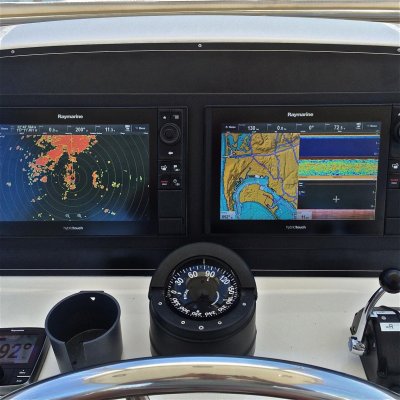Radar isn't a magic solution to collision avoidance as several high profile collisions between large ships and ships and yachts have proven. It's another tool, not a magic wand.
I'd rank electronics:
1) Autopilot
2) AIS
3) Radar
I'm not leaving the dock for any length of time with the autopilot out of commission. If the AIS or radar are out and the weather is decent, I'm gone.
Regarding chartplotting vs. radar accuracy, having the ability to overlay on a modern chartplotter resolves that whole question. Blindly following radar marking an out of position buoy is not a good thing either.
Interesting ranking. Using that as a springboard...
I suspect a recreational user's ranking is (should be?) influenced by regional issues. For us, here, the AIS is useful but no way no how ever gonna be more useful than radar... simply because most boats around here (I usually guess about 98-99%) don't transmit AIS. OTOH, in a busy river with tugs, tows, barges... yep, I can see AIS trumping radar, at least in good daylight weather. And AIS was useful on the AICW for arranging passes, etc.
FWIW, and for Boilermaker's benefit (YMMV), these days I'd probably rank stuff like this:
Depth finder
VHF (DSC, with GPS source)
Chartplotter (with GPS)
Autopilot
Radar
AIS
Redundant depth finder (we use a fish finder for this)
Redundant VHF (DSC, with GPS source)
Back-up plotter/GPS (laptops, tablets, smartphones, etc.)
Some of that ranking is pretty fluid, even in my own mind, though. A decent nav app on a tablet is so cheap, in the grand scheme of things, that it could very likely happen before AIS bubbles to the top of somebody's wallet... or a back-up VHF might not have to be fitted and a handheld VHF (for example) doesn't really cost an arm or a leg, so ditto...
And it incorporates my own preferences, too, biased by conditions in our normal cruising grounds... and without strict regard to whether Loop- or AICW-related. (or elsewhere).
And the wallet gets a vote. Making a choice between actually going cruising... or spending that cruise money on an AIS earlier rather than later... hmmm....
I think if I were buying another boat today, I'd concentrate my shopping more on the boat, less on the electronics. Fitted electronics might eventually become a tie-breaker, but I'd also assume that whatever's there may or may not be useful in the long run, may or may not be networked (a nice to have), may or may not allow flexibility for growth, etc etc etc...
So I'd plan on using whatever's there for a while, maybe a year or so, while studying what I'd really like to have. Then do that shopping and eventually... get 'er done. Even if the installation phase has to be incremental from that point.
-Chris


